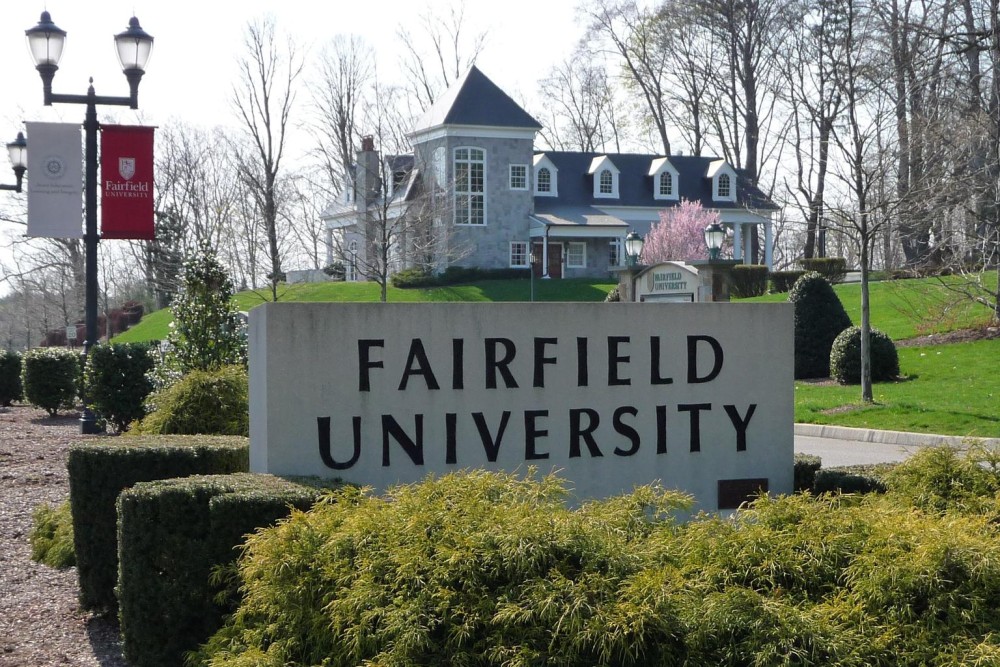
PROSPECT HEIGHTS – For the last six years as a faculty member at Fairfield University in southern Connecticut, Dr. Robert Nazarian has witnessed firsthand the “embarrassment of riches” the university has in faculty across disciplines doing climate related research.
That realization led Nazarian last year to approach the administration about creating a climate center to support faculty research. Fast forward to the start of this academic year, and the university has launched the Center of Climate, Coastal, and Marine Studies.
It’s the first research center in the university’s 80-plus year history.
“[Fairfield University] has fantastic faculty that are doing this research, and a lot of the work of the center is to take and to amplify that research,” Nazarian, an associate professor of physics whose work has primarily been in the area of ocean and climate modeling, told The Tablet.
“So I hope that with the launch of the center, and with its growth in subsequent years, we can become a destination for students who are interested in learning more about the climate system, but also a hub for faculty, regardless of their disciplines, to have a home where their scholarship is encouraged and can be strengthened by the resources of the Center,” Nazarian said.
Fairfield University is a Jesuit institution that was founded in 1942 that currently has about 5,000 undergraduate students. Across five schools, the university has 52 undergraduate majors and minors, along with 48 graduate programs and certificates.
The Center of Climate, Coastal, and Marine Studies is a research center that doesn’t have a curricular element to it. However, Nazarian noted that students are heavily involved in the faculty research in these areas, and therefore said the center will go a long way in preparing students for future careers.
Nazarian noted that over the last three years 117 students have conducted research projects led by Fairfield University faculty in the areas of climate, coastal and marine studies. Further, faculty and student research in these areas has resulted in over 70 peer-reviewed articles and book chapters, one book, and 55 conference presentations, he said.
“What we sought to do in this process is to create a research center across the whole university that would support faculty across all of the academic divisions, and when I say faculty here, I really mean faculty and students because so many of our faculty do research with undergraduates,” Nazarian explained.
“So we wanted to have a way of supporting and celebrating that research across the whole university, and while there’s not a curricular element to it, I would still argue that students are receiving fantastic instruction through the center, including hands-on research instruction, and that’s a great opportunity for our students,” he added.
In particular, there are a few things that lead Nazarian to believe that Fairfield University brings a uniqueness to the field. First, he noted that the university is located on the Long Island Sound, which allows faculty to use the coast for their active research.
Second, Nazarian highlighted the range of research areas that exist across the university, and the frequent collaboration and communication between faculty across disciplines.
For example, Nazarian said he works closely with colleagues at the university’s business school, who are experts in environmental economics and in willingness to pay economics, and together they’re able to use maps of future sea level rise to provide information to survey takers when they’re trying to gauge their willingness to pay for certain sea level rise adaptation and mitigation measures.
Elsewhere at the university, there are faculty working on climate anxiety research, climate negotiations and climate policy. There are also faculty in the School of Engineering on the marine side that are looking at algorithms for improving photographs that are taken underwater using artificial intelligence and machine learning. And the same scientists are also looking at monitoring landslides on Mars.
“So really the whole gamut, and again this is a very inclusive sense of climate, coastal and marine studies. We’ve got faculty in every discipline really that are looking at this through their own disciplinary lens, and I think that’s what is unique about [Fairfield University],” Nazarian said.
Third, Nazarian highlighted the influence of the Jesuit educational philosophy.
“We are a Jesuit institution, and so the way that we ask questions is perhaps informed by our Jesuit educational philosophy,” Nazarian said. “I think our educational philosophy, our identity as an institution, also has a bearing on how we’re asking these questions and encouraging us to think very deeply and critically about these questions and our responses to these questions, and so I think that provides another lens at which or through which our faculty are approaching these questions.”
